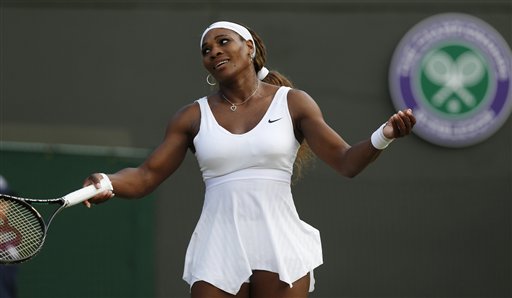When Ben Cox listens to the aspirations of his young tennis students one dream is missing. No one sees themselves playing on the grass courts at Wimbledon or the hard court at the U.S. Open.
“They have no American role models anymore,” said Cox, a tennis coach and former touted collegiate player at Michigan. “That’s just one of the problems with tennis in America right now.”
No Yanks were left to play in the round of 16 in both the men’s and women’s sides at Wimbledon. That hadn’t happened in 100 years. Thirteen American women and 10 men began the grand dame of tennis tournaments. After Madison Keys withdrew with a leg injury and John Isner was simply beat, everyone was gone way before they had a chance to bow or curtsy to the royals in the English royal box.
Certainly you can tune in and cheer for the Canadians, Milos Raonic and Eugenie Bouchard. Or Roger Federer, the old lion who plays Raonic in one semifinal. Or Novak Djokovic, one of the newer lions, who takes on Grigor Dimitrov.
“It’s not the same,” said Cox of Lights Out Tennis Academy in Falmouth. He coaches Olivia Leavitt, the Falmouth High player who won the Maine singles championship last month. “Djokovic is Olivia’s favorite player. She was able to chat with him online but it’s not like she (or any American) can relate to him playing tennis in a swimming pool.”
Djokovic grew up in Belgrade of what was then Yugoslavia during the Balkans War. His pool was drained and a carpet put down. The sound of bombs could be heard. His is a great story, but it’s not an American story.
“It’s cyclical,” said Paul Gastonguay, the tennis coach at Bates College who grew up playing street hockey in Lewiston. “For a long time it was the Swedes (think Bjorn Borg and his countrymen) who seemed to be everywhere. Now it’s the Spanish.”
Or the Czechs or the Serbs. Fifty years ago it seemed the Australians invented the game with the dominance of Roy Emerson, Rod Laver, John Newcombe, Margaret Court, Evonne Goolagong Cawley and of course, Ken Rosewall a bit before.
Over a 20-year period beginning in 1975 there four All-American Wimbledon finals. Arthur Ashe and Jimmy Connors. Connors and John McEnroe (twice) and Pete Sampras and Jim Courier. Sampras was the last American champ in 2000. Andy Roddick was the last American finalist in 2009.
Thank heavens for Serena Williams, the top women’s seed going into this year’s tournament. She’s won Wimbledon five times, the last in 2012. She also turns 33 in two months. The story of Serena and her sister, Venus, fighting their way out of the very tough Los Angeles suburb of Compton is an American story.
The stories and the examples need to keep coming. Instead, they seem to be ending.
“It takes years and years to build the skills to be successful in tennis,” said Gastonguay. “It’s maybe the hardest sport requiring eye-hand coordination. Kids want to see more immediate results. They have so many other options.
“I always tell them, if you play tennis you don’t share the ball. It’s always coming back to you. Just you.”
Cox and Gastonguay are optimistic – to a point. After years of not nurturing very young players, the United States Tennis Association is promoting a new program for children under 10. Courts are downsized, rackets are shortened and balls won’t bounce high over heads. The changes have given kids more chances to get into the return volleys that are the fun of the sport.
Exposing tennis to the youngest of players is one thing. Convincing them the game doesn’t have to be a country club sport is the image that needs remaking. Keeping young players is something else. The commitment in time and money can be enormous and until there’s a breakthrough and world ranking, the rewards can be meager.
Encouraging young to believe they might be the next Sampras or Williams can help. What child among us doesn’t imagine being David Ortiz or Dustin Pedroia. Tom Brady or Jerod Mayo. Rajon Rondo or Patrice Bergeron?
“Andre Agassi was my favorite,” said Cox. “He was edgy. I loved that.” Agassi retired in 2006, three years after Sampras left the sport. To remember you have to go to Youtube.com.
A new generation of American tennis players need to dream again.
This story was updated at 9:32 a.m. on Thursday, July 3 to correct the name of the United States Tennis Association.
Copy the Story LinkSend questions/comments to the editors.



Success. Please wait for the page to reload. If the page does not reload within 5 seconds, please refresh the page.
Enter your email and password to access comments.
Hi, to comment on stories you must . This profile is in addition to your subscription and website login.
Already have a commenting profile? .
Invalid username/password.
Please check your email to confirm and complete your registration.
Only subscribers are eligible to post comments. Please subscribe or login first for digital access. Here’s why.
Use the form below to reset your password. When you've submitted your account email, we will send an email with a reset code.